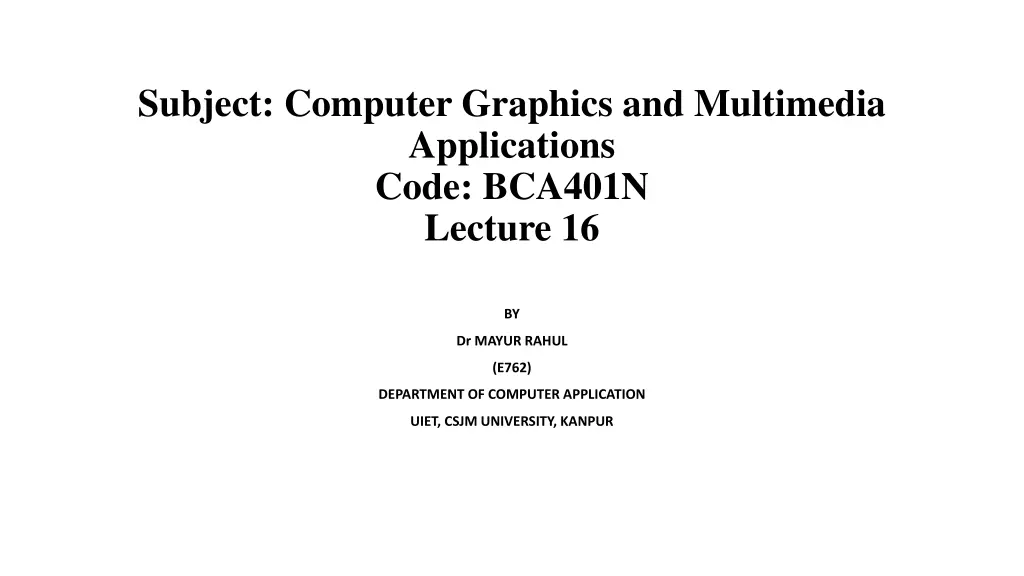
Computer Graphics & Multimedia Applications Overview
Explore the representation of curves, surfaces, and meshes in computer graphics and multimedia applications. Learn about polygonal meshes, parametric curves, parametric patches, and more. Understand how these elements are used to create visual content in the digital world.
Download Presentation

Please find below an Image/Link to download the presentation.
The content on the website is provided AS IS for your information and personal use only. It may not be sold, licensed, or shared on other websites without obtaining consent from the author. If you encounter any issues during the download, it is possible that the publisher has removed the file from their server.
You are allowed to download the files provided on this website for personal or commercial use, subject to the condition that they are used lawfully. All files are the property of their respective owners.
The content on the website is provided AS IS for your information and personal use only. It may not be sold, licensed, or shared on other websites without obtaining consent from the author.
E N D
Presentation Transcript
Subject: Computer Graphics and Multimedia Applications Code: BCA401N Lecture 16 BY Dr MAYUR RAHUL (E762) DEPARTMENT OF COMPUTER APPLICATION UIET, CSJM UNIVERSITY, KANPUR
OUTLINE Representing curves and surfaces Polygonal meshes Parametric curves and surfaces Quadric surfaces
Polygon Mesh A polygon mesh is a set of connected polygonally bounded planar surfaces. A mesh can be used to represent polygonal objects in a natural manner. A mesh can also be used to approximate a curved surface.
Parametric Curve A parametric polynomial curve is used to represent a 3D curve. Points (x, y, z) on the curve are defined by three polynomials, one each for x, y, z. The polynomials parameter, t. Typically, a third degree polynomial is used which produces a cubic curve. This figure depicts a Bezier curve. are in one
Parametric Patches (surfaces) Parametric Patches (surfaces) A parametric bivariate polynomial surface patch is used to represent a 3D curved surface. Points on the patch are defined by three bivariate polynomials, one each for x, y, z. The boundaries of the patch are parametric curves. Typically, a third degree bivariate polynomial is used which produces a bicubic patch. This is a much more efficient representation of a curved surface than a polygon mesh (fewer parametric patches needed for accuracy). This figure depicts a Bezier surface.
REFERENCES https://www.tutorialspoint.com/dbms/dbms_overview.htm https://www.studytonight.com/dbms/database-model.php https://www.geeksforgeeks.org/introduction-of-process-synchronization/\ https://www.javatpoint.com/os-process-synchronization-introduction
